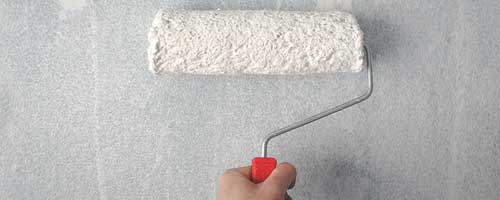Having trouble sleeping? Changing the color of your room could make a big difference

It is not just a myth. Color scheme can influence the quality of your sleep. It's not too surprising that warm and/or cooler shades are the best for the walls of your bedroom. On the contrary, you should avoid loud, vibrant, or bright colors that could interfere with your quality of sleep. They may work as accents to the base paints but it's best to stick with light colors to maximize sleep, any time of day.
Shape magazine suggests checking color scheme as one of the top five ways to give your bedroom a better-sleep makeover. According to their article, the color of your walls or bedding can influence the quality of your sleep. Calm, relaxing shades may help you calm your nervous system and nod off easier.
They suggest cool colors such as blue, purple, gray, silver, green, and other neutrals. Cool colors tend to lower blood pressure and heart rate to help achieve a good night's sleep. Opposing colors like red, orange, neons and other vibrant colors may attribute to feelings of anxiety and restless sleep. With these colors, the lighting in your room always tends to be bright, even after you turn the lights out. The key is to keep your room dark and cool. Your body and mind will respond better and allow you to drift off easily into dream world.
SleepWRITER, an online forum for sleep topics, claim that light shades of blue are the best color if you have trouble falling asleep. It induces feelings of calm and relaxation. They also suggest that if you have trouble waking up, light shades of yellow work well with the morning sun and welcome a cheery, brighter, warm room.
Another important factor in comparing room colors with sleep comfort levels is the size of your room. The Better Sleep Council looks at the ideal bedroom and limitations of space. You have probably heard it before and the experts are sticking to it: Choose lighter colors to make a room appear larger and darker colors to make a room appear more intimate and warm.

Have white walls? No need to paint them if you don't want to! The Better Sleep Council also notes that neutral walls such as taupe, grays, beiges and whites may be more suitable to help you wind down and trigger relaxation and sleep.
Painting your bedroom and picking out the right colors can be conflicting. You may love a certain color but it may not be beneficial to your sleeping routines. So think twice before picking your favorite color as the theme for your bedroom walls. Put your body and mind first and choose a soft hue or happy medium color that allows you to relax, be happy, and sleep well.
http://www.shape.com/lifestyle/mind-and-body/how-give-your-bedroom-better-sleep-makeover
http://www.sleepwriter.com/2011/12/how-to-choose-right-colour-for-your.html
